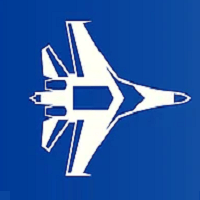Skyborg Autonomy Core System Flew Onboard MQ-20 Avenger During Orange Flag 21-2
July 1, 2021by AdminThe Skyborg team conducted a two hours and thirty minutes flight test on June 24 of the Skyborg autonomy core system (ACS) aboard a General Atomics MQ-20 Avenger tactical unmanned vehicle during the Orange Flag 21-2 Large Force Test Event at Edwards AFB, California. Skyborg is focused on demonstrating an open, modular ACS that can autonomously aviate, navigate, and communicate, and eventually integrate other advanced capabilities. Future Skyborg experimentation events will explore direct manned-unmanned teaming between manned aircraft and multiple ACS-controlled unmanned aircraft.
The test flight was part of the program’s Autonomous Attritable Aircraft Experimentation (AAAx) campaign line of effort to test and inform ACS development as it matures. The flight comes two months after the ACS was first demonstrated onboard a Kratos UTAP-22 tactical unmanned vehicle at Tyndall AFB, Florida on 29 April 2021. By integrating the ACS on the MQ-20 less than two months after completing tests on the UTAP-22, the Skyborg team proved the ACS’s modularity, portability, and scalability by demonstrating the same capabilities on a completely different aircraft using the same software release.
During the flight, the ACS performed a series of foundational behaviors necessary to characterize safe system operation. Once the MQ-20 safety pilot had achieved steady, level flight at altitude, the operator handed over control to the ACS to demonstrate its ability to execute basic flight autonomy behaviors. The ACS accomplished basic aviation behaviors and responded to navigational commands, while reacting to geo-fences, adhering to aircraft flight envelopes, and demonstrating coordinated maneuvering. It was monitored from a ground command and control station.
The Skyborg Vanguard team is a unique relationship that pairs Maj. Gen. Heather Pringle, Commander of the Air Force Research Laboratory as the Skyborg Technology Executive Officer (TEO) and Brig. Gen. Dale White, Program Executive Officer for Fighters and Advanced Aircraft as the Skyborg PEO. The Emerging Technologies Combined Test Force (ET-CTF), under the leadership of Lt Col Adam Brooks, serves as the executing agent for these test missions at the 412th Test Wing, Commanded by Brig. Gen Matthew Higer at Edwards AFB.
“As we have throughout our history, the test and evaluation enterprise is adapting our people and capabilities to compete at the speed of relevance. The execution of this flight test is a great milestone for our closely integrated development and acquisition team. Safely executing this test in conjunction with Orange Flag both expands the envelope for autonomous vehicle flight testing and improves warfighter confidence working with autonomous wingmen. As always, we’re highly motivated to help bring tomorrow’s technology to the warfighter today,” said Higer.
The ET-CTF is well-positioned to integrate and test emerging technologies, like autonomy, on various platforms (aircraft and weapons). The Avenger marks the first time the ET-CTF has worked on a Group 5 UAS. The Group 5 UAS category features the largest unmanned aircraft vehicles in size with a maximum gross takeoff weight of more than 1,320 lbs, an operating altitude of more than 18,000 feet and capable of speeds faster than 250 knots. The ET-CTF has provided critical infrastructure support and test expertise to Skyborg and will help lay the groundwork for integrating these aircraft into complex operational environments.

A General Atomics MQ-20 Avenger unmanned vehicle returns to El Mirage Airfield, Calif. June 24, 2021. The MQ-20 successfully participated in Edwards Air Force Base’s Orange Flag 21-2 to test the Skyborg Autonomy Core System. (Photo courtesy of General Atomics)

Skyborg Autonomy Core System Flew Onboard MQ-20 Avenger During Orange Flag 21-2 - MilitaryLeak.COM
The Skyborg team conducted a two hours and thirty minutes flight test on June 24 of the Skyborg autonomy core system (ACS) aboard a General Atomics MQ-20
 militaryleak.com
militaryleak.com
Skyborg autonomy core system has successful first flight
Termed Milestone 1 of the Autonomous Attritable Aircraft Experimentation, or AAAx, campaign, the autonomy core system performed a series of foundational behaviors necessary to characterize safe system
www.af.mil






